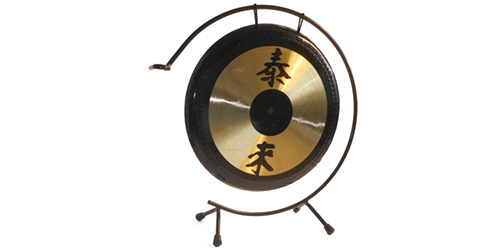Bang a Gong
In the 1960s, physicists studying fluorescent molecules found that a reflective surface could increase the decay time of an emitter and shift its spectrum. Today, such interactions between light, matter, and a bounding wall are studied within the field of cavity quantum electrodynamics (cQED) using expensive, high-precision optical components. But Lutz Langguth from the FOM Institute AMOLF, Netherlands, and colleagues have found a musically inspired way to do a classroom demo of cQED concepts without the high-end machinery. They showed that a nearby wall shifts the frequency and decay time of a sounded gong in a manner analogous to that observed with fluorescing molecule, an effect they can demonstrate with only a laptop and a simple recording device.
The team used a Chinese Chao gong, which is a circular brass plate with a turned up rim. In an open space, the gong has nine distinct resonances between 300 and 3500 Hz. The group analyzed the two lowest frequency modes, at 306 and 561 Hz, when the gong was clanged within a short distance from a concrete wall. They then recorded the frequency and duration of these resonances as they altered the separation between the wall and the gong.
The pitch of both resonances decreased by 0.1 Hz for gong-wall separations of 20 cm or less. This inaudible suppression in frequency arises because sound waves reflected from the wall distort the shape of the gong, shifting its resonant frequency. Langguth and colleagues also found that the proximity of the wall extended the duration of the gong’s “crash.” According to the researchers, the modulations in frequency and decay time should be greater in higher quality gongs, which convert a larger fraction of their mechanical energy into sound when struck. These acoustic effects could therefore be used as a method to check for imperfections in a gong or in other materials.
This research is published in Physical Review Letters.
–Katherine Wright
Katherine Wright is a Contributing Editor for Physics.





